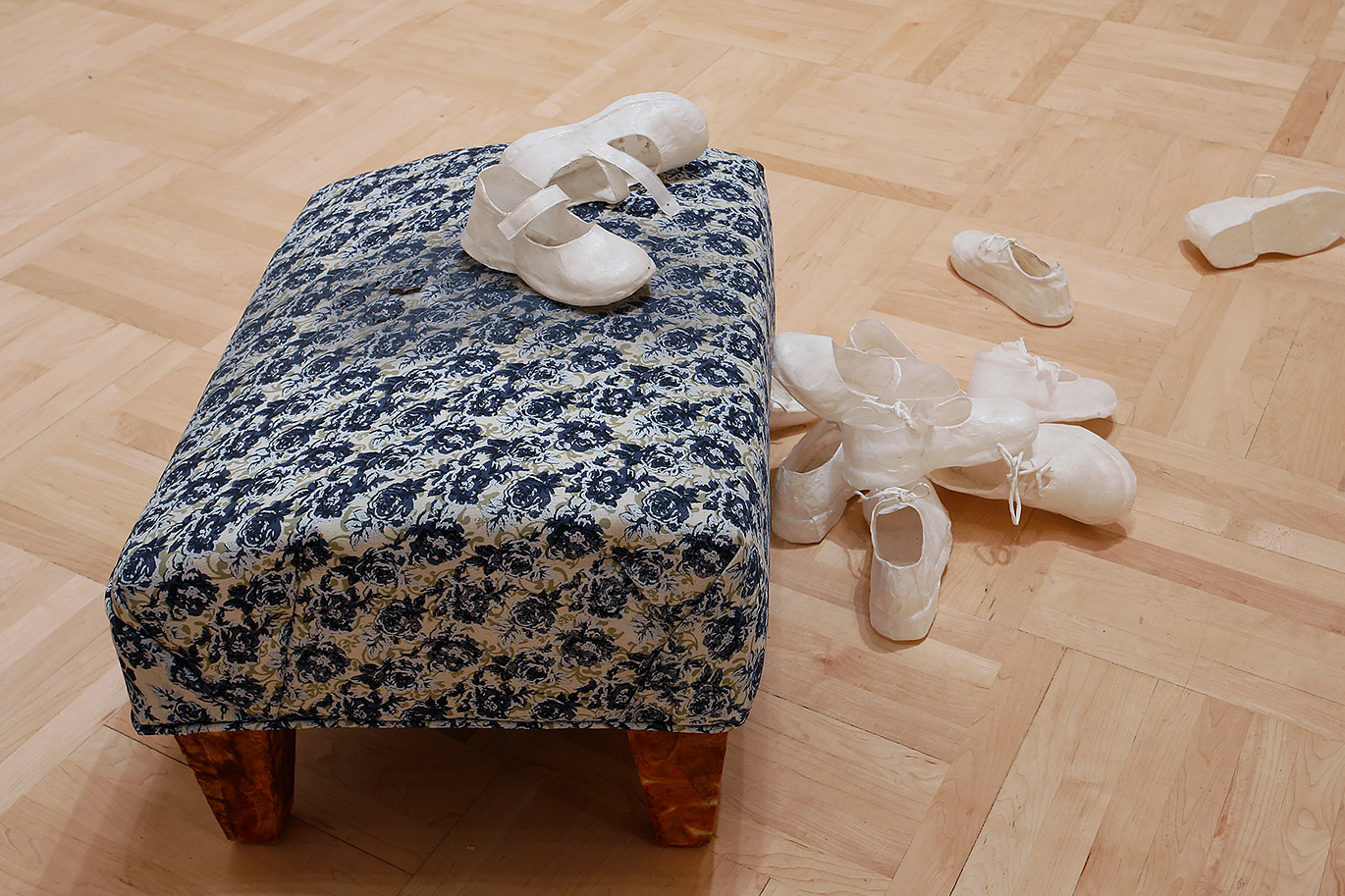- Autumn 2022
Syllabus Description:
Art History 203 (Writing Credit)
Survey of Western Art--Modern
Fall 2022
Instructor: Kolya Rice krice@uw.edu
Office hours: M/W 8:30-9:30 and by Zoom appointment
Teaching Assistants:
Inji Kim (Sections AA, AB injikim@uw.edu
Office hours: W, 12-1, via Zoom or by appointment
Nicole Block (Sections AC, AD) blockn@uw.edu
Office hours: W 1-2pm, via Zoom or by appointment
Or Vallah (Sections AE, AF) orvallah@uw.edu
Office hours: M, 4-5 pm, via Zoom or by appointment
Course Description:
This course introduces the major figures, styles and movements in Western art from the High Renaissance to the present. It also presents the principle issues, techniques, and interpretive methods of the discipline of art history. As well as learning to recognize the key “monuments” of European and American art from around 1500 to 1900, students will consider how a study of visual products adds to our understanding of past cultures and societies. Illustrated lectures anchor the course, but discussion is always encouraged, and sophisticated reading assignments will be provided to expand upon the text and lectures.
Required Readings:
1. Textbook: Marilyn Stokstad, Art History, 6th Edition, vol. 2 (2018) (ISBN-978-0134479262) Purchase E-text Version
2. Electronic Reserve Readings (ER) posted on Canvas (see weekly Modules)
3. Lectures Guides (download, print, and bring to class)
ArtH 203 Lecture Guides Fall 2022-1.zip
Helpful sources on 2hr reserve in Art library:
J. Pierce, From Abacus to Zeus: A Handbook of Art History
J. Hall, Dictionary of Subjects and Symbols in Art
S. Barnet, A Short Guide to Writing about Art
“W” Credit Component:
This course has been designated as a “W” or writing intensive course; this is not optional. As such, you may expect substantial writing assignments, writing tutorials, and feedback on your writing over the course of the quarter. An important method to improve writing proficiency is through revision in response to feedback. You are required to revise two writing assignments this quarter. You must complete all components, the initial draft and the revision to receive credit for this course. The writing assignments you are required to revise are:
- 3-Page Summary Essay
- 7-Page Directed Research Paper
Student Responsibilities:
2 quizzes: 10% each (20% of overall grade) see prompt on Canvas
Each quiz will require students to define terms and to write short answers on topics covered in the lectures and readings. These are open notes quizzes—you may return to the lectures and readings when composing your answers. Each quiz will only cover the topics for that 5-week section of the course. In other words, they are not comprehensive. You will have a full week to complete each quiz. These quizzes will be graded on a 10-point scale.
3-Page Summary Essay and revision (15%) See prompt on Canvas
In this writing assignment students will be required to clearly summarize important information related to canonical works of art and their cultural contexts that you have encountered in lectures, discussions, and special topic readings over the course of the quarter. One revision in response to assessment feedback will be required. This assignment is graded on a 10-point scale.
7-Page Directed Research paper steps and revision (40%) See prompts on Canvas
In this this research-based writing assignment students will critically assess scholarly arguments in the discipline of Art History, which will provide the basis of a clearly organized and argued interpretation of a work of art. This assignment will have several steps. One revision in response to assessment feedback will be required. This assignment is graded on a 100-point scale.
Active participation in all quiz sections and in-class exercises (25%)
Quiz sections are writing-focused unless otherwise specified. Students will gain skills in college-level art historical rhetoric and composition by workshopping specific fundamentals of academic writing. All students are expected to attend quiz section to contribute to and engage in discussions, group and partner exercises, in-class exercises, and peer reviews. Quiz sections are designed to improve the quality of your course papers and is a necessary component of gaining a “W” credit. Students are required to bring prepared materials to every quiz section when noted. See the syllabus for the weekly breakdown of these required materials (RM). Failure to participate in quiz section and bring required materials will result in a weekly penalty to participation grade.
The 10-point scale corresponds to the following grades:
10 4.0 A
9 3.4 B
8 2.7 B-
7 1.7 C/C-
6 1.0 D
5 and below 0.0 F
The 100-point scale corresponds to the following decimal/letter grades:
95-100 4.0-3.9 A
90-94.99 3.8 - 3.5 A-
87-89.99 3.4 - 3.2 B+
83-86.99 3.1 – 2.9 B
80.00-82.99 2.8 - 2.5 B-
77-79.99 2.4 - 2.2 C+
74-76.99 2.1 - 1.9 C
70.00-73.99 1.8 - 1.5 C-
67-69.99 1.4 - 1.2 D+
64-66.99 1.1 – 0.9 D
60-63.99 0.8-0.7 D-
Below 60 0.0 F
Course Outcomes:
Learn Actively - Learning is a personal, interactive process that results in greater expertise and a more comprehensive understanding of the world.
- Distinguish formal qualities that separate different stylistic periods
- Employ interdisciplinary methods of visual analysis
- Explore the relationships between art and its social, cultural, political, historical and/or religious contexts
- Develop interdisciplinary knowledge to examine how power and privilege manifest in culture and investigate how systems of power are related to class, race, gender, religion, national origin, sexual orientation and other identities
- Identify strategies in visual representation for challenging systems of power and privilege
Think Critically, Creatively and Reflectively - Reason and imagination are fundamental to problem solving and critical examination of ideas.
- Use a variety of approaches to think critically about and reflect on personal and cultural assumptions and biases, and to consider alternative views regarding issues of power and inequality as they relate to issues of the visual representation of sexuality, ethnicity, gender and religion
- Identify key art historical issues, determine the assumptions underlying arguments, and recognize the way that historical and cultural context affect meaning
- Explore and articulate various ways that art represents cultural identity which is shaped by varying degrees of power and privilege, in relation to both a local context and interconnected world
Communicate with Clarity and Originality - The ability to exchange ideas and information is essential to personal growth, productive work, and societal vitality.
- Discuss multiple interpretations of course content as it relates to structures of power, privilege and inequality using discipline-appropriate concepts and theories, and articulate how and why these structures inform personal, professional and social identities
- Articulate points of view while using details of a work of art or its context as evidence
- Demonstrate proficiency to conduct guided research using a wide variety of materials from multiple points of view
- Use appropriate sources and technologies to gather and present information
- Question and reflect on assumptions, statements and information made throughout the course by the text, instructors and students
- Demonstrate effective use of interdisciplinary methodologies employed in the course to visually analyze works of art and architecture
- Contribute ideas and information individually and in a group dynamic
VeriCite anti-plagiarism software:
Notice: The University has a license agreement with VeriCite, an educational tool that helps prevent or identify plagiarism from Internet resources and work submitted by previous students of this course. I will use the service in this class; all assignments and quizzes you submit will be checked by VeriCite. The VeriCite Report will indicate the amount of original text in your work and whether all material that you quoted, paraphrased, summarized, or used from another source is appropriately referenced. All instances of intentional plagiarism will result in zero credit on the assignment, and a report of indicating academic dishonesty to the School of Art and the University of Washington. For further information, visit: https://itconnect.uw.edu/learn/tools/canvas/canvas-help-for-instructors/assignments-grading/vericite/plagiarism-faqs/
Religious Accommodations Policy
o Covid-19 Prevention Plan for the School of Art + Art History + Design
o UW Novel Coronavirus Information
o View the COVID-19 Public Health Requirements and Guidance Flowchart for information on when to report COVID-19 illness and close contact exposure, when to get tested for COVID-19, and when to stay home.
o UW Covid-19 Face Covering Policy



